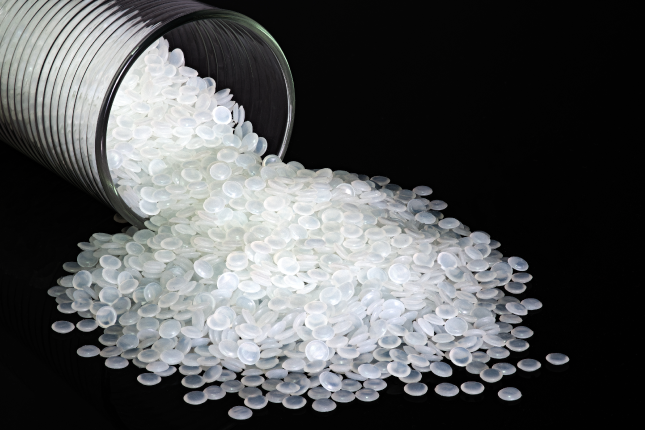Naphtha-derived polyethene and polypropylene are the starting points for most of the plastic products we use today. These polymers are used from everything from clothing to toys. Specific properties of the polymer, such as colour, texture, workability and flammability, are controlled by adding different substances to the base material during manufacture. These properties can be related to appearance, how easy the material is to work with during manufacture, or are legislated behaviours, such as fire-resistance.
For example, titanium oxide is a white pigment that is used widely. It’s especially useful because it adds whiteness and opacity, helping to make the colour look bright. Calcium, zinc and magnesium stearates are used as lubricants, helping to reduce friction between the polymer and other additives, making processing easier.
The amount of additive is tightly controlled. There needs to be enough to ensure the material has the desired properties, but overuse can be expensive. It’s important to check the amount of additive in the mix during manufacture. One of the best ways of doing this is with XRF analysis.

X-ray fluorescence (XRF) is an established technique for measuring elemental composition, detecting contaminants and gauging how much of a given compound is present within a sample. The sample to be measured can be solid or liquid, and the test is completely non-destructive, meaning no waste of precious production materials.
The technique can detect very low amounts of material (parts per million) with high accuracy, and this makes it ideal for checking the amount of additive within polymer-based production.
Hitachi High-Tech have a range of XRF analyzers that help simplify quality control. They can detect a wide range, including titanium, zinc, calcium and magnesium. You put the polymer granules, fibres or discs into the sample cup, which is then put in the instrument. You then press a button and the measurement is done in about a minute. The results can be displayed in a simple pass or fail format on the screen.
The results are stored within the equipment and can be transmitted directly to our cloud-based data management solution, ExTOPE connect. This makes the storing and traceability of results very easy for your quality records, and helps if you need to provide certificates of analysis with your shipments. The analyzers are equally at home within a lab or along the production environment, and have a rugged design for minimum downtime.
XRF can also be used to screen materials for regulated substances. For example, you can prove you can check against REACH guidelines for halogenated flame-retardant applications. Current RoHS regulations state that both PBBs and PBDEs must be at or below 1000 parts per million. You can use XRF to measure bromine content and show you are within or outside these levels.
The technique can also be used to detect heavy metals such as lead, cadmium, mercury and chromium, helping you to meet current legislation around packaging.
Our range of XRF analyzers can be used at various stages throughout your manufacturing process to ensure the right amount of additive is being used, and the final product complies with current legislation. To find out more about using XRF analysis in your facility, get in touch with one of our experts. You can find out more about our range of analyzers suitable for halogen and metals analysis here.
Find out more